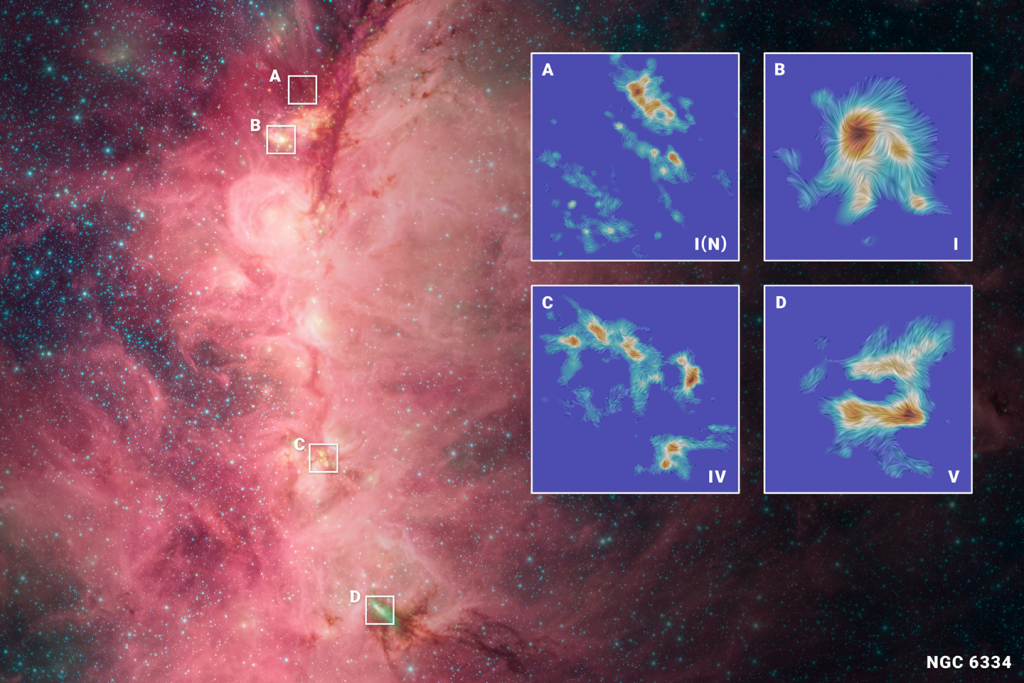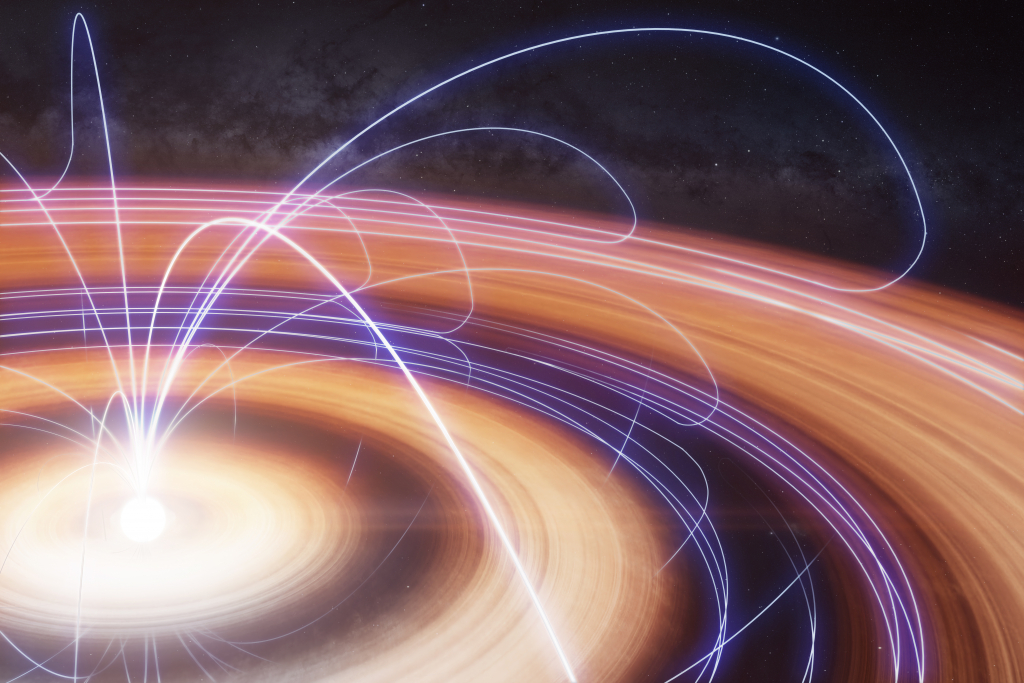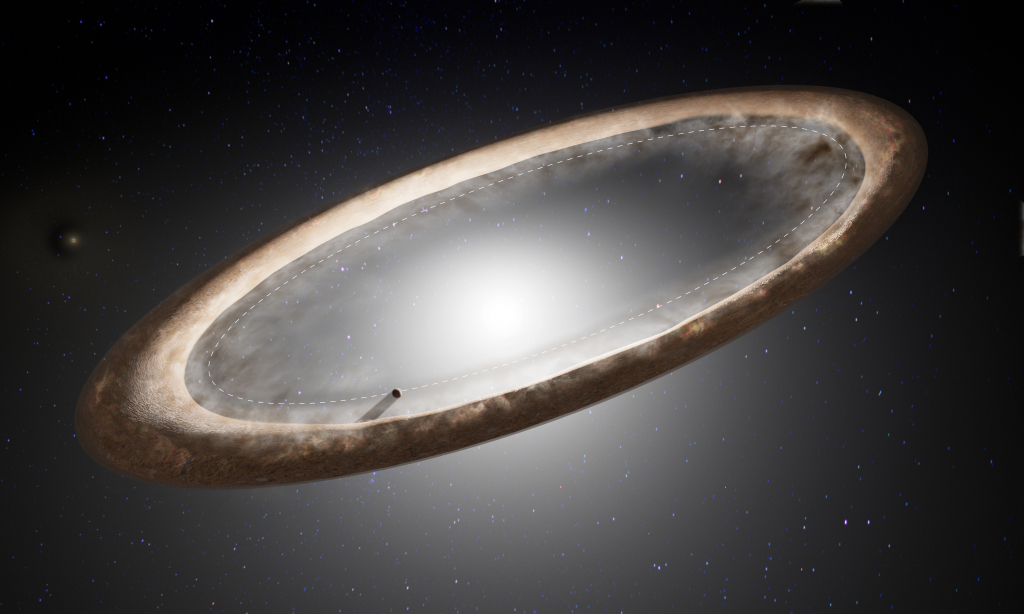Astronomers have captured the clearest picture yet of how massive stars are born, revealing a dramatic interplay between gravity and magnetic fields in some of our galaxy’s most dynamic star forming regions.


Oct 8, 2025
Astronomers have captured the clearest picture yet of how massive stars are born, revealing a dramatic interplay between gravity and magnetic fields in some of our galaxy’s most dynamic star forming regions.

Sep 15, 2025
Astronomers have created a detailed map revealing the magnetic fields weaving through TW Hydrae, one of the closest known stars with a planet-forming disk, using the Atacama Large Millimeter/submillimeter Array (ALMA).

Sep 8, 2025
Astronomers using the Atacama Large Millimeter/submillimeter Array (ALMA) have made the highest resolution image to date, revealing new insights into the unusual and mysterious architecture of the debris disk encircling Fomalhaut, one of the brightest and most well-studied stars in our cosmic neighborhood.

Aug 11, 2025
New research has uncovered compelling evidence that water from a comet is strikingly similar to that found in Earth’s oceans, offering fresh support for the idea that comets may have played a crucial role in delivering water—and possibly some of the molecular ingredients for life—to our planet.